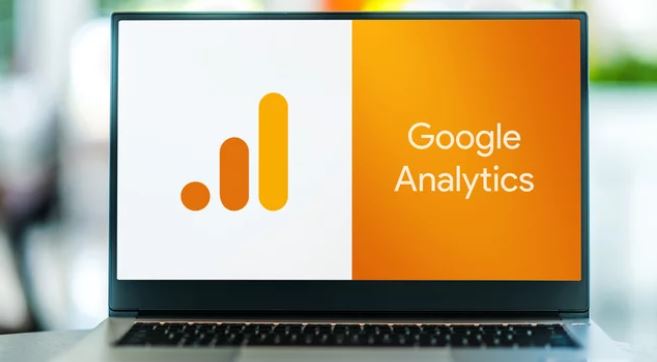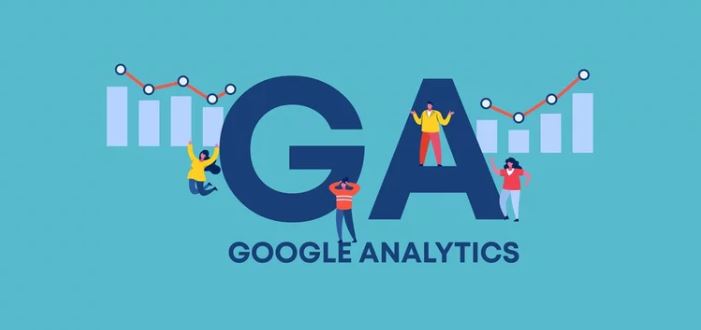Last Updated on
The digital landscape of today, ever bustling with advancements and innovations, pivots primarily on data-driven decision-making. In the vast universe of digital marketing, two stalwarts that provide a wealth of data are Google Analytics and Google Ads Conversion Tracking. Despite sharing a common objective of tracking conversions, their functionalities, applications, and outcomes exhibit stark contrasts. This comprehensive guide takes you deep into the nuances, enabling you to tap into their full potential.

The Singular Vision of Google Ads Conversion Tracking
Google Ads Conversion Tracking is a specialist tool designed and developed by Google to track the success of your Google Ads campaigns. It monitors user interactions and actions post-ad engagement and converts these actions into valuable data.
This tool provides insights into actions like form submissions, e-commerce checkouts, and even phone calls. It transforms these user interactions into quantifiable metrics, assisting you in comprehending the effectiveness of your ad campaigns. However, it’s crucial to note that its scope remains limited to tracking interactions stemming from Google Ads.
Key Features of Google Ads Conversion Tracking
- Tracks specific user actions post Google Ads engagement
- Offers visibility into the performance of individual ads, keywords, and ad groups
- Facilitates ad optimization based on the conversion data
The Holistic Approach of Google Analytics Conversion Tracking
Google Analytics Conversion Tracking, on the other hand, adopts a broader approach, transcending the boundaries of Google Ads. It delves into user behavior on your website, independent of the traffic source, whether from social media, email marketing, organic search, or your Google Ads.
The range of data that Google Analytics tracks extends to every user interaction on your website. This data is then transformed into detailed reports, giving you a panoramic view of user behavior and traffic sources. Thus, it enables a comprehensive understanding of your website’s performance, driving informed decision-making.
Key Features of Google Analytics Conversion Tracking
- Tracks user interaction across various traffic sources
- Offers in-depth analysis of user behavior on your website
- Enables cross-device and cross-platform tracking
The Intersection of Google Ads and Google Analytics Conversion Tracking
The crux of understanding Google Ads and Google Analytics Conversion Tracking lies at their intersection. While both platforms cater to the need for tracking conversions, they differ in their focus areas. Google Ads Conversion Tracking excels in analyzing the outcomes of your Google Ads, whereas Google Analytics Conversion Tracking provides an all-encompassing view of user behavior and website performance.
Leveraging both platforms in harmony can arm your business with the insights required to optimize your ad campaigns, enhance user experience, and boost conversions.
Setting Up a Seamless Integration
Integrating Google Analytics with Google Ads accounts offers a seamless data flow between the two platforms. Such integration allows for leveraging Google Analytics metrics for ad optimization in Google Ads while enabling the use of Google Ads data in Google Analytics reports.
To maximize the benefits of this integration, ensure to:
- Link your Google Ads account with your Google Analytics account
- Import specific goals and transactions from Google Analytics to Google Ads
- Enable auto-tagging in Google Ads for seamless data sharing
Harnessing the Power of Conversion Tracking
Understanding the functionalities of Google Ads and Google Analytics Conversion Tracking is just the tip of the iceberg. The key to unlocking their full potential lies in leveraging their insights, applying them to optimize your marketing efforts, and using them to drive tangible growth. The more intricately you understand the functionalities and applications of these two platforms, the more adeptly you can navigate the waters of data-driven decision-making.
The tools may change in the ever-evolving realm of digital marketing, but the underlying principle remains the same: understanding user behavior and meeting user needs drives conversions. Through the lens of Google Ads and Google Analytics Conversion Tracking, businesses gain the insights necessary to achieve this understanding and meet these needs, driving their growth in the digital landscape.
In conclusion, while Google Ads Conversion Tracking and Google Analytics Conversion Tracking may serve different facets of the digital marketing spectrum, both are integral to the overarching strategy of driving conversions and achieving business goals. Embrace their unique functionalities, respect their differences, and leverage their insights to steer your business toward success in the digital age.
FAQs
Why is Google Analytics different from Google Ads?
Google Analytics and Google Ads are two distinct platforms that serve different purposes within the Google ecosystem. Here are some key differences between the two:
- Purpose and focus:
- Google Analytics: Google Analytics is primarily focused on website analytics and provides insights into website traffic, user behavior, conversions, and other related metrics. It helps website owners understand how users interact with their site and make data-driven decisions to optimize performance.
- Google Ads: on the other hand, Google Ads is an advertising platform enabling businesses to create and manage online advertising campaigns. It allows advertisers to display ads across various Google services, such as search results, websites, YouTube, and more. The primary purpose of Google Ads is to drive targeted traffic and conversions through paid advertising.
- Data sources:
- Google Analytics: Google Analytics collects data from website visitors through the tracking code installed on web pages. It provides comprehensive insights into user behavior, traffic sources, demographics, and other dimensions and metrics related to website performance.
- Google Ads: Google Ads gathers data on advertising campaigns and their performance. It tracks ad impressions, clicks, conversions, cost data, and other metrics for assessing advertising campaigns’ effectiveness.
- Attribution and measurement:
- Google Analytics: Google Analytics offers more comprehensive attribution models and multi-channel analysis. It allows businesses to understand the user journey across different marketing channels and touchpoints, including organic search, direct traffic, referral sources, and more. This helps in evaluating the impact of various marketing efforts on website performance.
- Google Ads: While Google Ads provides attribution data within its platform, it primarily focuses on measuring and optimizing ad-specific metrics. It offers insights into ad impressions, clicks, conversions, and associated costs, helping advertisers gauge the success of their advertising campaigns.
- Access and integration:
- Google Analytics: Google Analytics is available to all website owners and can be easily integrated into websites using a tracking code. It provides various features and customization options to analyze website data and generate reports.
- Google Ads: Google Ads is explicitly designed for advertisers who want to create and manage online advertising campaigns. It requires setting up a Google Ads account and configuring campaigns, ad groups, and keywords to run advertisements. While it can integrate with Google Analytics to share data and insights, it is not a prerequisite for using Google Ads.
In summary, Google Analytics focuses on website analytics and user behavior insights, while Google Ads is an advertising platform for managing online advertising campaigns. While they can be used together to gather comprehensive data and optimize marketing efforts, their primary purposes and functionalities differ.
How do I flow between Google Ads and Google Analytics?
To flow between Google Ads and Google Analytics and utilize the integration between the two platforms, follow these steps:
- Link your Google Ads account to Google Analytics:
- Sign in to your Google Analytics account.
- Go to the Admin section by clicking the gear icon in the lower-left corner.
- Under the Property column, select “Google Ads Linking.”
- Click the “+ New Link Group” button and follow the instructions to link your Google Ads account to the desired Google Analytics property.
- Enable auto-tagging in Google Ads:
- Sign in to your Google Ads account.
- Click on the gear icon in the upper-right corner and select “Account Settings.”
- Find the ” Tracking ” section in the Preferences tab and ensure the “Auto-tagging” option is turned on. This automatically allows Google Ads to append particular tracking parameters to your ad URLs.
- Access Google Ads data in Google Analytics:
- In Google Analytics, navigate to the desired property and view the reports.
- To access Google Ads data, go to the “Acquisition” section and select “Google Ads.”
- Here, you can explore various reports, such as Campaigns, Ad Groups, Keywords, and more, to gain insights into how your Google Ads campaigns perform within the context of your website.
- Utilize Google Analytics data in Google Ads:
- In Google Ads, navigate to the desired campaign, ad group, or keyword.
- Within each level, you’ll find a “Google Analytics” tab where you can access Google Analytics data.
- By clicking on this tab, you can see website engagement metrics, conversion data, and other valuable insights from Google Analytics, which can help optimize your Google Ads campaigns.
- Customize your reports and set up goals:
- Both Google Ads and Google Analytics offer customization options for reporting.
- In Google Analytics, you can create custom reports, apply filters, and segment data to analyze specific dimensions or metrics relevant to your goals.
- Additionally, you can set up goals and conversion tracking in Google Analytics to measure the success of specific actions or events on your website, providing valuable insights for campaign optimization in Google Ads.
You can seamlessly flow between the two platforms by linking your Google Ads and Google Analytics accounts, enabling auto-tagging, and utilizing the available reporting features. This integration allows for a comprehensive analysis of your advertising campaigns’ performance and impact on website engagement, conversions, and other vital metrics.




